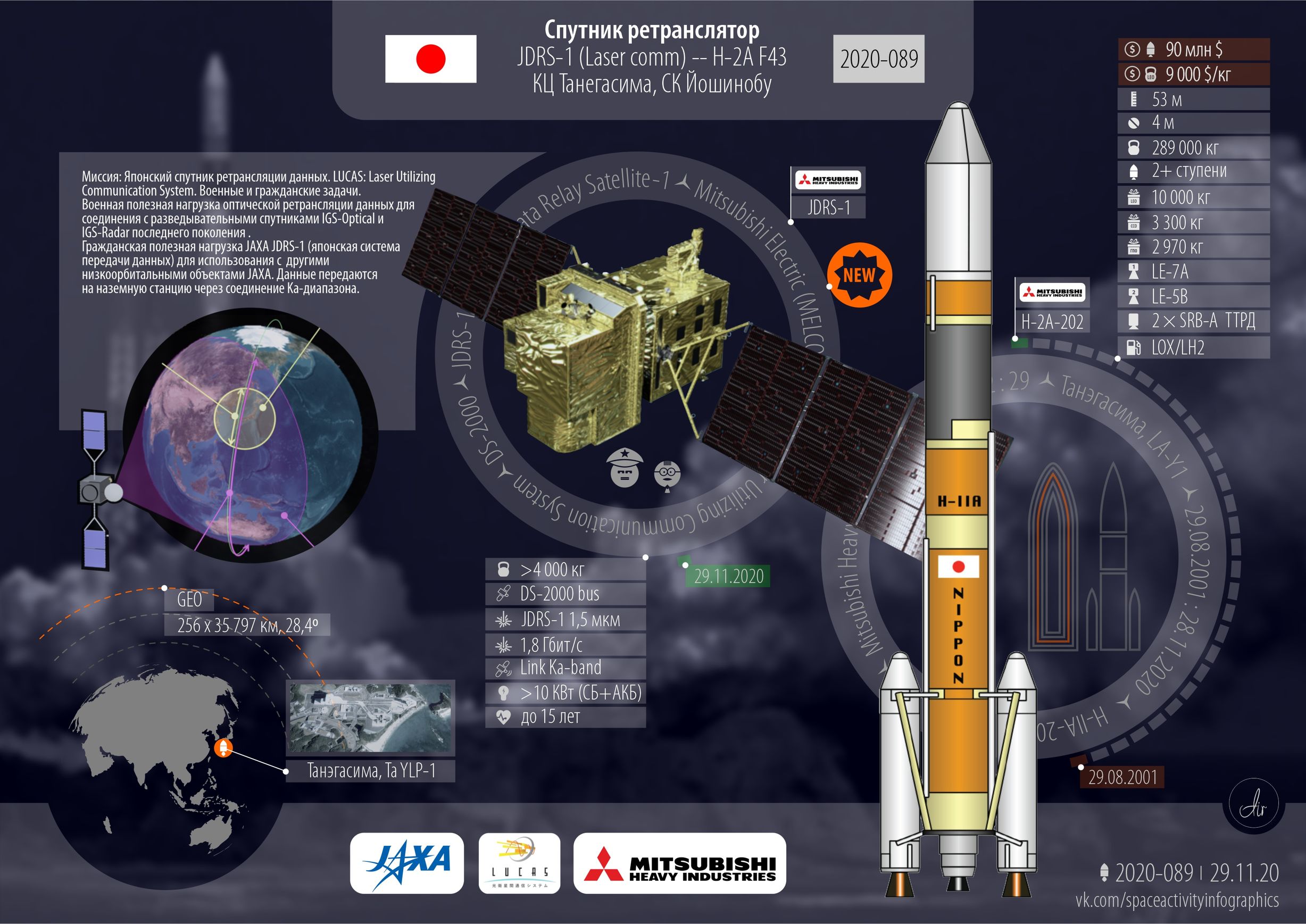Vyacheslav Ermolin, November 29, 2020

Mission:
Launch of a Japanese data relay satellite into a geo-transfer orbit. Military and civilian tasks. Dual-use satellite for military and civilian LEO satellites. For inter-satellite communication, optical (laser) communication channels are used. Communication with the ground by radio.

Motto:
"I am a small country, but I want to know everything at once."
There is no official motto.
:
29 07:25 UTC.
, .
-:
H-IIA — - , H-II. — . 2 4 . (JAXA) Mitsubishi Heavy Industries. - «H-II» ( ), . «H-IIA» , , , - .
:
JDRS — . () IGS-Optical IGS-Radar . JAXA JDRS-1 (, 1,5 ) LUCAS (Laser Utilizing Communication System) JAXA. Ka- 1,8 / 14 .
:
256 x 35 797 , 28,4°.
.
:
— 4- . .
— 29- - H-IIA-202 2001 . .
— 43- - H-IIA. .
— 98- . .
— 2017 - Kodama [Data Relay Test Satellite, DRTS].
— . .
— - 90 $.
— 1 9 000 $.
.
NSF.


Personal Opinion:
Japan's fourth and final launch this year. A military relay satellite was launched into orbit, which is also supposed to relay data from civilian Japanese satellites in low orbit. Satellite visibility time from ground tracking stations in Japan is about 10 minutes out of a 90-minute orbital period of a typical reconnaissance satellite (optical or radar). Therefore, a repeater satellite is required to receive data quickly.
The H-II launch vehicle is comparable in capability and cost to the American Falcon 9. But Japan is going to upgrade it next year to the new H-III. Cheaper and more technological.